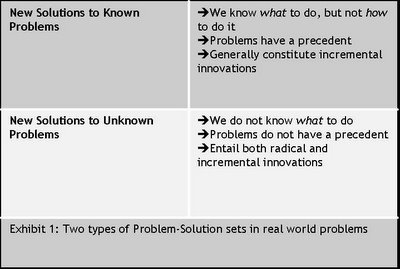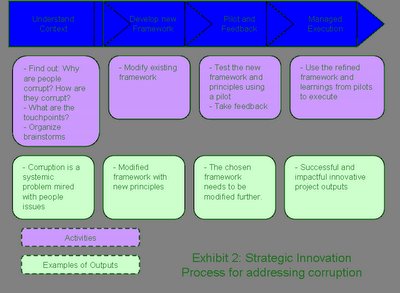Business Model Innovation- the why, what, where and how?
1. Business Model Innovations are more likely to come from collaborators and partners (only 14% feel it comes from internal R&D).
2. In spite of the right intent about Innovation, senior executives are struggling with the execution of Innovative projects. Despite a desire to make changes, 80 percent of CEOs said their organizations have not been very successful at managing change in the past.
3. More than a third of CEOs polled said the top obstacle to innovation was an unsupportive culture and climate in their companies.
What does this tell us? There is a broad and growing consensus in the global economy about the why of Innovation. Questions like- why is innovation important to my industry?, why should I take up Innovation now? - are clearly answered in the minds of decision makers. What is not so clear is the what, where and most importantly, the how of Innovation.
The late Peter Drucker, in his seminal book Innovation and Entrepreneurship, gives a detailed answer to the Where question. He talks about the conceptual areas where an innovator must look in order to discover opportunities. Some such areas are: changes in demographics, disruption in the natural rhythm of a process, changes in perceptions of the population, unexpected success or failure and new knowledge.
Clayton Christensen, the author of various best sellers on Innovation (Innovator's Dilemma, Innovator's Solution, Seeing the Future) talks primarily about the What of Innovation. He provides a systematic overview of what the innovation process really is, what its nature is. In his second book (Innovator's Solution), he talks about the how as well- addressing issues such as appropriate resource allocation methods, the right marketing techniques, and so on. I haven't read his third book, but would love to shortly.
This leaves us with the how. Two books I recently read attempt to address this vexing and complicated question- Vijay Govindarajan and Chris Timble's "10 Rules for Strategic Innovators" and W. Chan Kim and Renee Mauborgne's "Blue Ocean Strategy". Both books give tools and analytical frameworks for decision makers, so that they can structure the uncertainty inherent in the innovation process, and make informed decisions.


